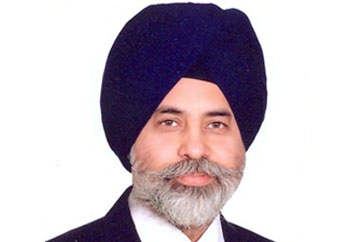 Aaron Rodrigues (ML): The Indian auto market has a potential for exponential growth. How much growth do you see for
Aaron Rodrigues (ML): The Indian auto market has a potential for exponential growth. How much growth do you see for
Sandeep Singh (SS): For 2010, we see a compounded annual growth rate (CAGR) of 15%-17% in the passenger market, mainly for small- and mid-size cars. Sales of sport utility vehicles (SUVs) have been growing over the past few months, but they have not shown similar growth in this month. Multi-purpose vehicles (MPVs) have seen marginal growth. Even during the first six months of last year (2009), MPVs didn’t grow much, but in the second half, it (sales growth) showed positive trends. Overall, I expect MPV sales to grow at a CAGR of 5%-6%.
ML: Over the past few months,
SS: Our aim is to increase our presence in the Indian car market and thus increase market share as well. For the next few years, we have set various targets—we need to put up a new plant, build up production capacity, develop a vendor base, expand our dealer network, and develop our manpower skill-levels and systems. So there are various things happening in the organisation. Out of these milestones, our second facility is under construction.
Two years ago, we had planned to launch a compact car by the end of 2010, which we hope to achieve. As far as new vehicles are concerned, we have already unveiled some at the Auto Expo (recently held) in
ML: Currently,
SS: With the Ethios, which is a hatchback and sedan, we are entering the B segment (passenger car market) this year, and this is a growing segment. In the first year, we are looking at a volume of around 70,000 vehicles. We are looking to increase our overall market share in the passenger car segment from 3% to 10% by 2015.
ML: With the construction of your second unit underway, how many units are you planning to produce in
SS: We are putting up a second plant with an investment of more than Rs3,000 crore. This plant is under construction; we are going to manufacture the compact car there. The production will start in December 2010 in Bidadi. Currently it (the facility) is being built to produce 70,000 cars per year, but it can expand to 2,00,000 cars per year.
ML: Do you feel any pressure on your profits from your Indian operations?
SS: For earning profits, everyone, including our company, is under pressure. I don’t think profits will be huge as only volumes will generate good profits. All of us are under pressure in terms of getting the required margins.
ML: Many companies like Hyundai are using
SS: Though it’s not easy, it certainly makes sense exporting cars—especially compact cars—from
ML: On the export front, what are the similarities and differences between
SS: I think it (manufacturing and exporting) is directly related to the domestic market potential. If you look at the Chinese market, it is huge. So when you have such large volumes and economies of scale, you can have much better localisation and competition. When you have such a large market, you will have many manufacturers in the same segment, resulting in a high level of competition in each segment. This forces you to give better services and response levels to customers. This, of course, is from the marketing perspective.
The auto sector helps the economy of a country as it plays an important role. That is why you see that in
ML:
SS: Such cars will have a limited sales number. People who are environmentally conscious and who want to make a statement about it would go for this kind of technology. Even though the ownership and running costs of the Prius are on the lower side, we think that it will have limited potential for sales.
Now, talking about the price being on the higher side, first thing is that, since the Prius is imported as a completely built unit (CBU), it attracts an 85% customs duty. But we thought if you have to cross a certain price barrier, it would be better if you can add more features. So in the Prius, we have added more features to make it a value-for-money vehicle.
Secondly, if you were to do a market survey, environment consciousness in the Indian consumer still doesn’t exist. That is a reason why we are running a program like NDTV Greenathon. Our idea is not to sell many hybrid vehicles but to deliver a good environment to our customers and to the general public. It is our responsibility as well. With the eco-friendly vehicle, we just want to create awareness about the environment among people.
ML: Do you think the prices of such eco-friendly vehicles will come down?
SS: The price of eco-friendly vehicles may come down, but it all depends on the Union government. In other parts of the world, we see governments giving relaxation and subsidies on hybrid vehicles in terms of duties and other taxes. We don’t see this happening in
ML: What are the other new vehicles you are planning to launch in
SS: This year we are not planning to launch any vehicles in
— Aaron Rodrigues